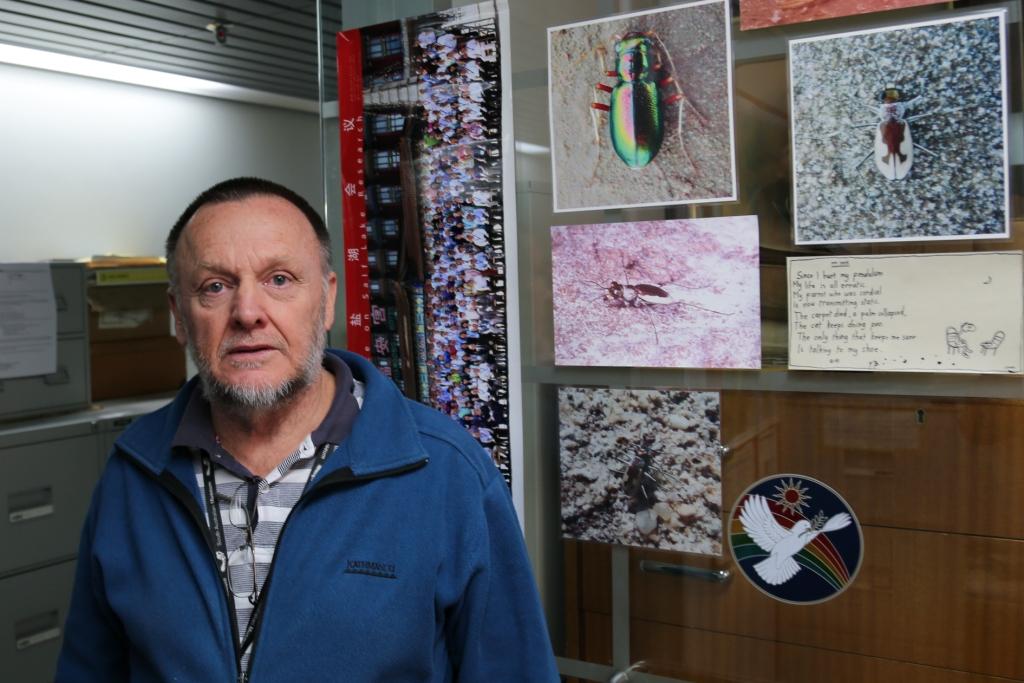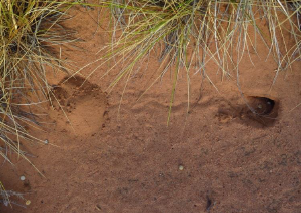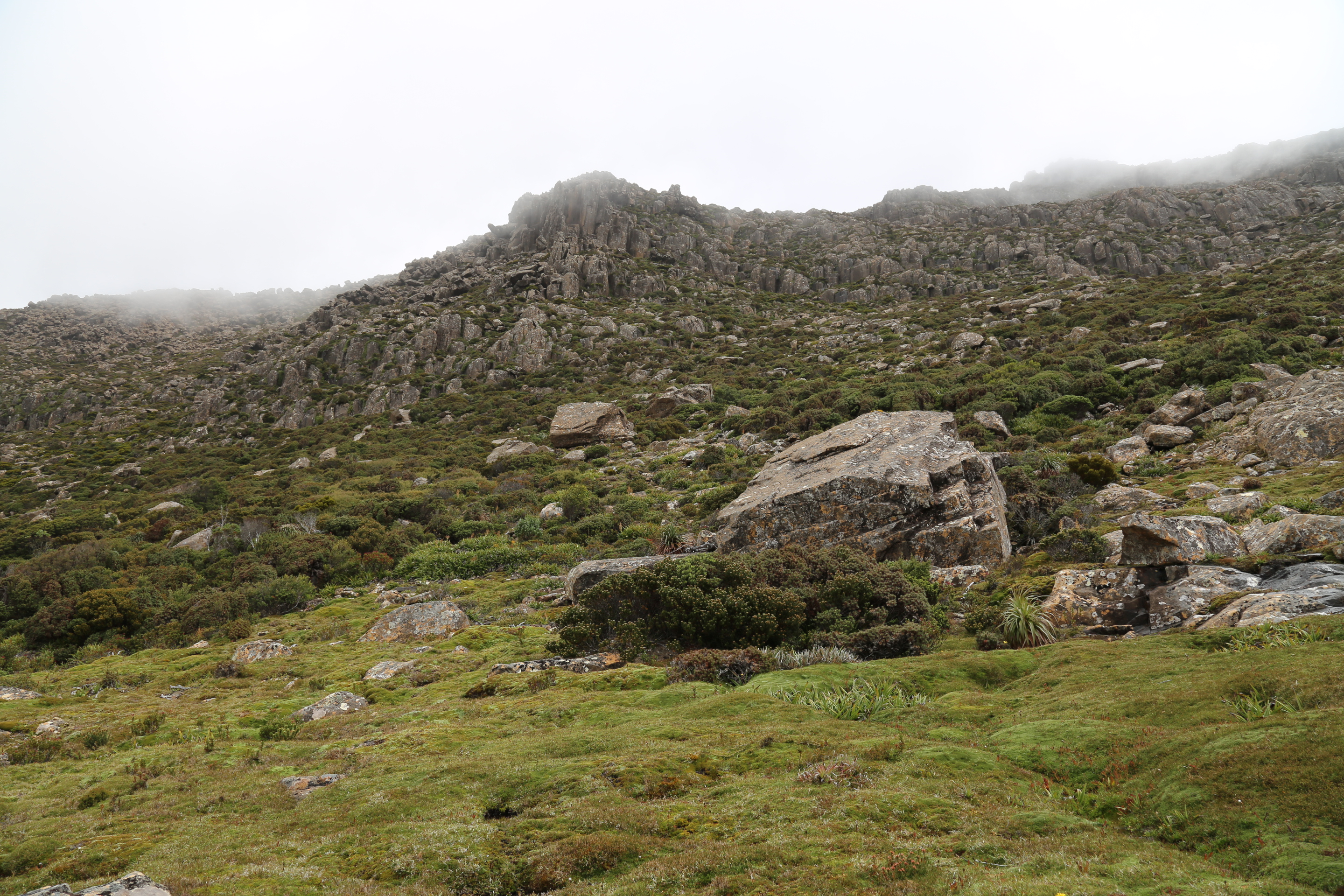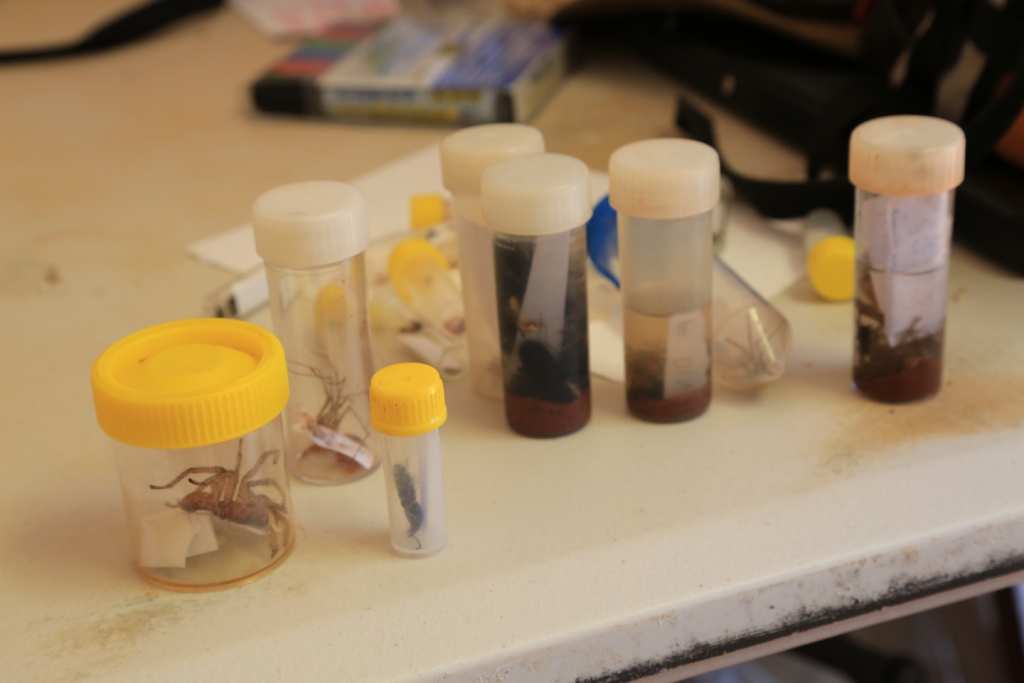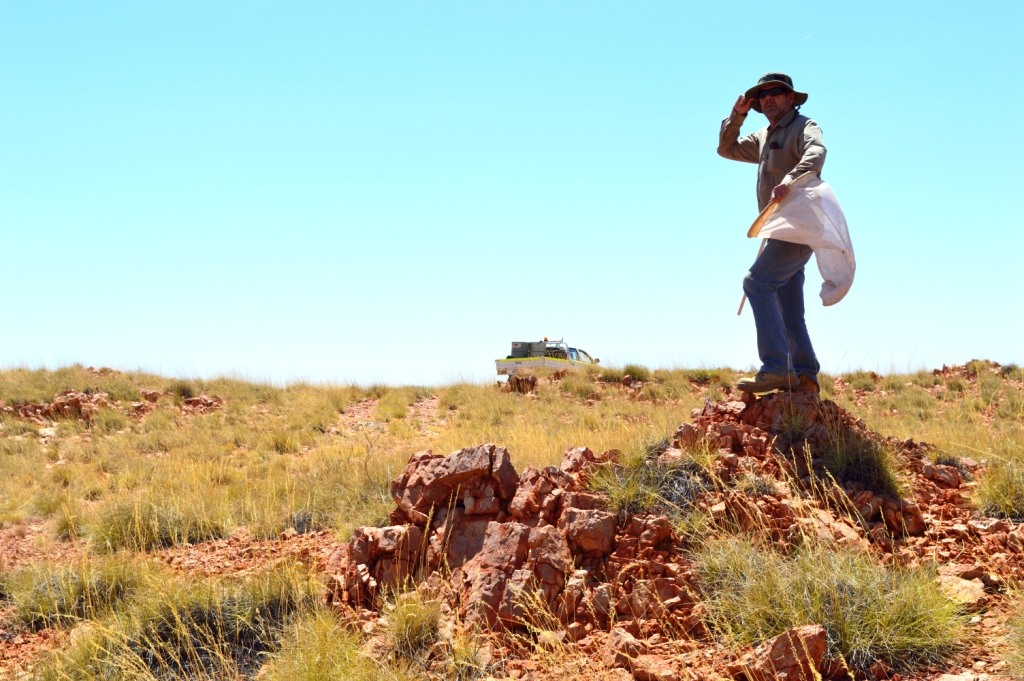A few weeks back I had the good fortune to visit South Australia to prepare for the upcoming Lake Torrens Bush Blitz. Part of the trip involved a behind-the-scenes tour of the South Australian Museum with Peter Hudson, who’ll be coming on the expedition. I was intrigued to learn that Peter is hoping to collect […]
Read More →Blog Posts
Rare marsupial mole found at Kiwirrkurra
The recent discovery and filming of a western marsupial mole (Notoryctes caurinus) by Indigenous rangers near Kiwirrkurra has garnered a lot of media attention. The marsupial mole, which is restricted to the deserts of central and western Australia, is almost never seen, and even less often captured on camera. It spends most of its time underground, and […]
Read More →Tasmania’s Wild South West
In early February a team of 17 scientists embarked on a Bush Blitz expedition into the remote and magnificent Southwest National Park which forms part of the Tasmania Wilderness World Heritage Area. This is Tasmania’s largest national park and is made up of wild rivers, jagged mountain ranges, rolling buttongrass and cushion plant plains, patches […]
Read More →Spiders from Kiwirrkurra
Dr Barbara Baehr’s results have come through from the Kiwirrkurra Bush Blitz. A memory: Barbara bustles into the little demountable building that was our office at Kiwirrkurra. It is mid-morning, and she has returned from her first day checking the spider pitfall traps. Underneath her broad-brimmed hat her face is ruddy, radiant, glowing with happiness. […]
Read More →Bush Blitz dives deep
From the deserts of central Australia to the wet topics of the top end right down to the alpine areas of Tasmanian Bush Blitz scientists have discovered new species and made thousands of new records. Surveying some of the remotest places in Australia isn’t always easy so 4WDs and helicopters are the usual way these scientists get to work each day. But […]
Read More →Where should we look for new species?
We are often asked how we decide where to conduct Bush Blitz expeditions. In its early stages, Bush Blitz was limited to surveying recent additions to the National Reserve System, which made the choice of locations relatively easy: we went to whichever newly added reserves our scientists were most keen to survey. But as the […]
Read More →
